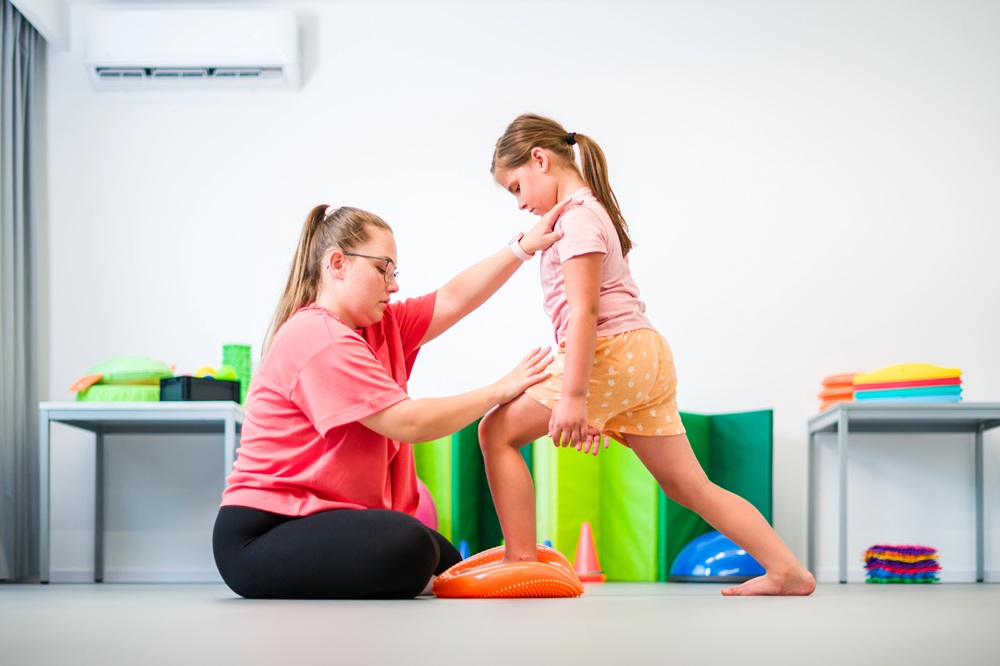
Standing balance is fundamental to independence and safety in daily life, playing a crucial role in occupational therapy. The most effective standing balance activities in occupational therapy are those that combine dynamic movement, functional tasks, and patient-specific adaptations to meet individual needs. Research and clinical experience highlight activities like reaching, ball games, standing at counters for daily chores, and interactive tasks such as folding laundry or gardening as highly beneficial for improving balance and stability.
Occupational therapists select and adapt activities based on the child’s current abilities and therapy goals. By engaging patients in purposeful, real-world tasks, therapists can target both static and dynamic balance, improve strength, and increase confidence in mobility. This practical approach not only reduces fall risk but also supports better participation in daily routines and fosters greater independence.
Key Takeaways
- Practical standing balance activities combine task relevance and movement.
- Therapists adapt interventions to each child’s unique needs.
- Functional activities strengthen balance and boost real-world independence.
This article is not medical advice. Consult with a licensed professional to determine which balance activities are safe and effective for your child.
Most Effective Standing Balance Activities in Occupational Therapy
Standing balance activities in occupational therapy focus on practical approaches that help individuals build stability, foster independence, and regain confidence for everyday living. Effective activities target core strength, functional reaching, and coordinated movement patterns to address mobility and improve balance across age groups.
Occupation-Based Standing Balance Interventions
Occupation-based interventions anchor balance training in familiar, goal-directed activities. Therapists select tasks that mirror real-life scenarios, such as gardening, reaching for kitchen items, or folding clothes at a surface. These tasks integrate multiple planes of movement, encourage weight shifting, and can be tailored to patient interests.
For older adults, standing at a counter to fold towels or reaching up to hang clothes addresses both balance and the practical needs of daily life. In pediatric occupational therapy, playful tasks—like setting up simple snack stations or engaging in dress-up activities—become part of occupational therapy pediatric activities that develop balance through meaningful engagement. This approach increases adherence and motivation while helping develop the muscles and stability required for safe, independent living.
Dynamic Balance Exercises for Improved Mobility
Dynamic balance exercises focus on improving the body’s ability to remain steady during movement. These activities challenge stability through shifting the center of gravity, alternating foot positions, or reaching with the arms while standing. Typical exercises include toe taps, step-ups, side lunges, and balance walks along a taped line.
Therapists may introduce variations, such as using unstable surfaces or adding dual tasks, such as holding a ball while stepping. These challenges are graded to patient ability, ensuring safety and gradual improvement. Regular practice of dynamic balance exercises enhances lower body strength and coordination, directly supporting functional mobility and reducing the risk of falls in daily environments.
Functional Standing Activities for Daily Tasks
Functional standing activities prioritize the specific tasks patients need to complete each day. Examples include practicing grooming, brushing teeth, or combing hair while standing at the sink. These daily self-care routines challenge balance in a practical setting and integrate essential movements like reaching, weight shifting, and turning.
Occupational therapists also use task simulations, such as preparing a simple meal or loading a dishwasher, to mirror home environments and routines. For pediatric populations, activities like putting away toys on shelves or participating in interactive games while standing create purposeful opportunities for balance training. This targeted practice familiarizes individuals with movements they need for safe, independent participation in their unique roles and routines.
Key Strategies and Adaptations for Enhancing Standing Balance
Standing balance can be improved with structured training that addresses coordination, posture, and appropriate use of equipment. Adaptations tailored to individual needs help maximize effectiveness and safety in occupational therapy interventions.
Coordination Training and Postural Control
Strengthening coordination and postural control is essential for better standing balance. Occupational therapists use functional exercises, like stepping in multiple directions or reaching while standing, to challenge both dynamic stability and body alignment.
Key strategies include:
- Practicing stepping over obstacles.
- Performing weight shifting from side to side.
- Maintaining postural alignment during activities such as folding laundry or hanging clothes.
Therapists often guide patients to engage their core and lower extremity muscles, emphasizing correct foot placement and upright posture. These activities also enhance proprioception and spatial awareness, both crucial for balance recovery and fall prevention during daily tasks.
Integrating Adaptive Equipment
Occupational therapists frequently introduce adaptive equipment to support standing activities, especially when a patient’s balance is limited or fluctuates. Using grab bars, raised garden beds, sturdy counters, or walkers provides extra stability and confidence during functional tasks. Adapting the environment can make activities safer and more manageable, allowing a person to practice balanced tasks in gradual progression. Equipment selection is always based on individual risk factors and the specific daily routines of the child.
Conclusion
Standing balance activities in occupational therapy help improve stability, strength, and confidence for children of various ages and abilities. Techniques such as weight shifting, single-leg stands, and reaching tasks target core strength and proprioception.
A combination of functional and dynamic exercises is recommended to lower fall risk and promote independence in daily life. Tailoring activities to individual goals and abilities encourages greater engagement and measurable progress. For optimal results, ongoing assessment and adjustments ensure that interventions stay challenging and relevant as children progress. Collaboration between the therapist and the child is essential for meaningful outcomes.

Leave a Reply